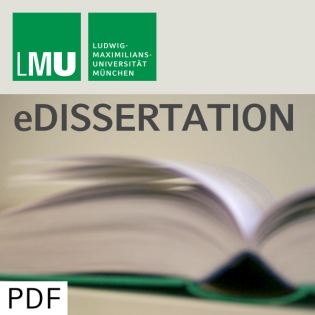
Nonuniversal features of turbulent systems
Beschreibung
vor 9 Jahren
Turbulence is one of the most widespread phenomena in nature
occurring in fluids and plasmas at all scales - from the blood flow
in the human body, via the Earth's atmosphere to the remnants of
supernovas at astrophysical scales. Despite its frequent
occurrence, constructing a theory of turbulent motion, which
provides reliable quantitative predictions, represents one of the
unsolved problems of classical physics. Most of the research
efforts in the past have been focused on studying the Navier-Stokes
model of simple fluids and trying to understand the Fourier
spectrum of velocity fluctuations. Due to this common restriction
to the Navier-Stokes equations, turbulence is usually associated
with power-law spectra of universal form which arise only at scales
where both driving and dissipation mechanisms are inactive.
However, recent studies reveal that many active systems which do
not possess a true inertial range can, nevertheless, exhibit
power-law spectra. Furthermore, those spectra are not of universal
form which contradicts the classical theory of turbulence. One of
the turbulent models we shall consider in this work derives from
the Kuramoto-Sivashinsky equation. It describes a simple
one-dimensional active system where energy is injected at large
scales and dissipated at small scales. Based on observations from
plasma physics we modify the linear part of the equation such that
the large scales remain practically intact but the damping rate at
high wave numbers approaches a constant. We construct a
semi-analytical approximation for the modified equation which
predicts a power-law form for the energy spectrum in the range
where the ratio between the characteristic linear and nonlinear
frequencies is scale-independent. Furthermore, we conclude that the
steepness of this power law is not universal but depends on the
frequency ratio. These results are confirmed by numerical
simulations. Our analysis could also be relevant for kinetic
Alfven-wave turbulence in the solar wind where similar conditions
might occur. Further in this work we present the first systematic
study of another active system which provides a continuum model
aimed at the coarse-grained description of the dynamics observed in
dense bacterial suspensions. The model extends the framework of the
familiar Navier-Stokes equations by including additional linear and
nonlinear terms in order to emulate energy injection and
dissipation as well as the flocking tendency of bacteria. The
resulting dynamics has been described as 'low-Reynolds-number
turbulence' and the corresponding energy spectrum exhibits
nonuniversal power laws at large scales. With the aid of extensive
numerical simulations we study the scale-to-scale energy flow in
spectral space. The physical insight gained this way helped us to
develop an approximation for the spectral energy balance equation.
Its solution provides an energy spectrum of a power-law form at
small wave numbers. Furthermore, we derive a functional dependence
of the steepness of this power law on the system parameters. A
comparison with data from numerical simulations verifies our
results.
occurring in fluids and plasmas at all scales - from the blood flow
in the human body, via the Earth's atmosphere to the remnants of
supernovas at astrophysical scales. Despite its frequent
occurrence, constructing a theory of turbulent motion, which
provides reliable quantitative predictions, represents one of the
unsolved problems of classical physics. Most of the research
efforts in the past have been focused on studying the Navier-Stokes
model of simple fluids and trying to understand the Fourier
spectrum of velocity fluctuations. Due to this common restriction
to the Navier-Stokes equations, turbulence is usually associated
with power-law spectra of universal form which arise only at scales
where both driving and dissipation mechanisms are inactive.
However, recent studies reveal that many active systems which do
not possess a true inertial range can, nevertheless, exhibit
power-law spectra. Furthermore, those spectra are not of universal
form which contradicts the classical theory of turbulence. One of
the turbulent models we shall consider in this work derives from
the Kuramoto-Sivashinsky equation. It describes a simple
one-dimensional active system where energy is injected at large
scales and dissipated at small scales. Based on observations from
plasma physics we modify the linear part of the equation such that
the large scales remain practically intact but the damping rate at
high wave numbers approaches a constant. We construct a
semi-analytical approximation for the modified equation which
predicts a power-law form for the energy spectrum in the range
where the ratio between the characteristic linear and nonlinear
frequencies is scale-independent. Furthermore, we conclude that the
steepness of this power law is not universal but depends on the
frequency ratio. These results are confirmed by numerical
simulations. Our analysis could also be relevant for kinetic
Alfven-wave turbulence in the solar wind where similar conditions
might occur. Further in this work we present the first systematic
study of another active system which provides a continuum model
aimed at the coarse-grained description of the dynamics observed in
dense bacterial suspensions. The model extends the framework of the
familiar Navier-Stokes equations by including additional linear and
nonlinear terms in order to emulate energy injection and
dissipation as well as the flocking tendency of bacteria. The
resulting dynamics has been described as 'low-Reynolds-number
turbulence' and the corresponding energy spectrum exhibits
nonuniversal power laws at large scales. With the aid of extensive
numerical simulations we study the scale-to-scale energy flow in
spectral space. The physical insight gained this way helped us to
develop an approximation for the spectral energy balance equation.
Its solution provides an energy spectrum of a power-law form at
small wave numbers. Furthermore, we derive a functional dependence
of the steepness of this power law on the system parameters. A
comparison with data from numerical simulations verifies our
results.
Weitere Episoden

vor 8 Jahren

vor 8 Jahren







Kommentare (0)